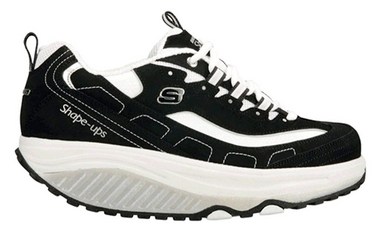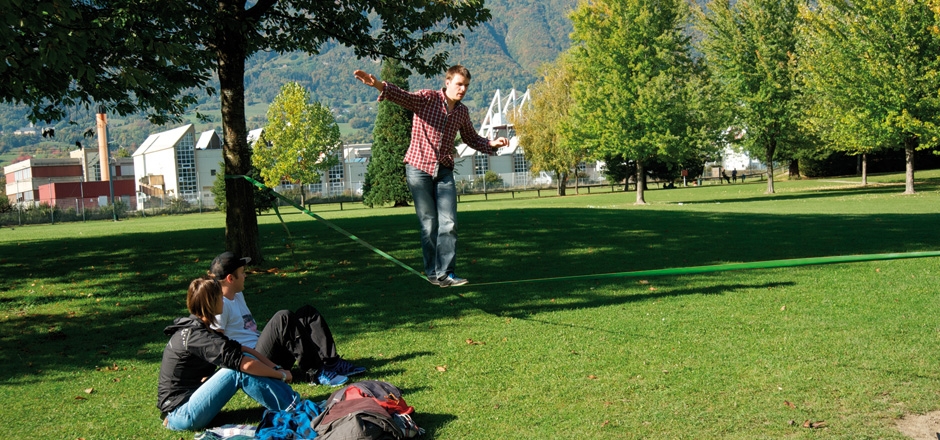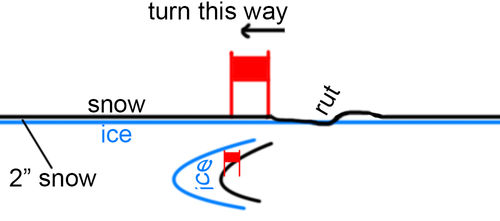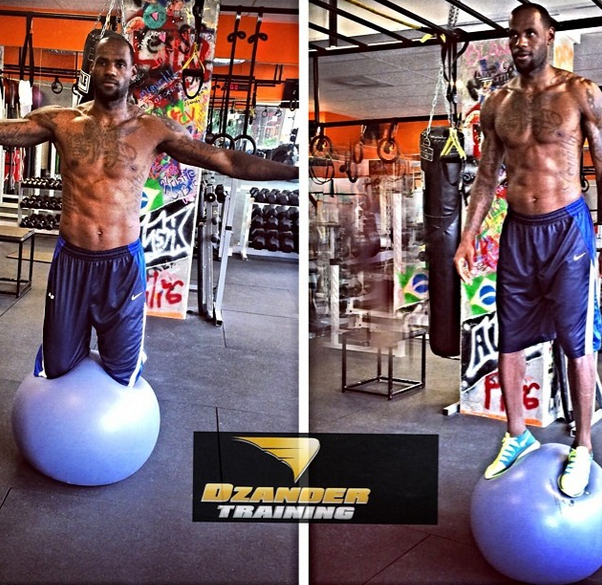Unstable Surfaces Versus Solid Ground: Which is Better?
Yesterday I put up a quick status through social media saying that the majority of people find balancing on solid ground challenging during some movements, so adding instability to the mix isn’t going to be beneficial, and to master the ground before moving on to more advanced techniques or devices. There’s really not much benefit to putting someone who has never done any form of balance training before onto a challenging surface before they learn how to balance themselves in space on a solid surface, like the ground. I’m as guilty of doing this in the past as everyone, but I’ve found the return on the time investment was pretty minimal.
There’s absolutely no denying that unstable surfaces increase proprioceptive drive into the muscles and cause them to work hard compared to doing the same movements on a stable environment, especially at the exact same load and other variables remaining constant. This has been primarily shown to be beneficial in rehab situations, where regaining muscle contraction timing can be a huge importance to returning to activity, but does this translate as well into healthy individuals looking to gain muscle, lose fat or train for specific sport performance?
We saw a pretty fun example of these concepts in play when Sketchers released their Shape Up shoes, which were essentially butt ugly runners with a mile high foam cushioning on the bottom, with the premise that the instability of the shoes would help you burn more calories compared to regular shoes. This claim was refuted and they were required to pay out for false marketing, but what they should have also had to pay for was the therapies for everyone who developed ankle and foot tendinitis from wearing them.
While some people laughed at this and went for the minimalist shoes, these too came under fire for false promises of benefit, and as always the truth usually lies somewhere in the middle of the extremes.
Eric Cressey, who did a masters thesis on the topic of unstable surface training, wrote an excellently cited article for T-Nation HERE outlining some of the big findings from the research world regarding unstable surfaces. Some of the key points:
- unstable surface training seems to provide massive benefits to lower leg injuries (shins, ankles and feet) but beyond that, not much benefit for the lower body training program in healthy folks. One such study showed that while unstable surface training help those who had previous ankle injuries, it also increased the rate of overuse knee injuries in athletes compared to controls.
- In terms of power output, stable surface training produced the only improvements in pre-post test differences using soccer players matched for position. This means in terms of training benefits, if performance is the main determinant, unstable may not be the way to go. The unstable group actually decreased sprint performance from pre to post testing, which could be the difference between making the team and being a first round cut.
- Unstable surfaces, but more specifically unstable LOADS seem to be more beneficial for the upper body, ideally with injuries or higher risk of injuries, and also in terms of developing coordination and shoulder stability with a higher rate of transfer to other activities than found in the lower body.
While the outcomes measured here focused on things like power output and strength, balance is a different skillset altogether. It’s also a very specific situational skillset that is usually environmentally specific. I trained a guy who was a competitive slack liner, and who had actually won a few medals at different events, but who couldn’t stand on one foot with a kettlebell to do a single leg deadlift without falling over. At least for the first few weeks of training.
While both challenged frontal plane stability, they did it in different manners, which means his skillset in one scenario is different from another.
Another common complaint is that the surface athletes play on doesn’t move, but rather the athlete moves over it. This is true in some instances, but the ground does move in some sports, such as field sports, skiing, beach volleyball, and a bunch of others. The ground deforms when force is applied, and the angle of force application will cause some repositioning if the ground is soft enough. If the ground isn’t uniformly a similar density, it could cause the foot to sink in and then either be pushed to one side or the other, resulting in a potential ankle roll or knee movement. These deformations are very visible in sports where multiple athletes cross the same surface repeatedly or one after another. The first runner has no ruts or bankings to work with, while the last run of the day will have much more pressed out and angled courses to work with, which will influence how fast each can corner, and what pressback they get from the surface.
These surface changes usually result in a concave surface, which in itself is very different from the concave surfaces of most unstable surface trainers. The only one I’ve seen that has a convex motion is the CoreTex, but there could be others.
The difference simply in the shape and type of surface is enough to warrant discussions on specificity of training, but also the action that occurs on these surfaces is worth discussions as well.
Now if someone is using unstable surfaces for lower threshold training to use as a recovery modality, while also working on mental acuity in terms of how the body moves and creates stabilization without increasing the load or potential damage to the muscles or joints, that’s completely fine. That’s what i am thinking Ronda Rousey, UFC cage fighting phenom and her trainer were aiming for when they recently put out a video of her working on a couple of stability balls.
She’s also publicly stated that she hates weight training and I’m sure that would ruffle a few feathers from hardcore gym bros, but she doesn’t have to like lifting weights if her fights last a minute or less. I would say that in terms of specificity, this is a far cry from having someone to roll with and throw, which I’m sure she has an endless supply of people willing to voluteer for the honour of going over her shoulder, but it’s a passable way of training the body to do something without creating a lot of physical stress.
Along those same lines, LeBron James finished the 2013-2014 season and was pictured doing work on a stability ball. In the month immediately following a run through to the finals in the NBA, and as a player who gets bumped and smashed every time he touches the ball for the entire season, having some workouts where he doesn’t have to grind out reps or where he has some time to let his body recover from the beating of the playoffs might actually be a good thing.
Having worked with some higher level athletes, I can tell you a competitive season and long run through playoffs can drain an individual, and as much as we would all like to just say “they make millions, they can do it and be thankful for it,” trust me they want to go as much as the next guy but they’re not cyborgs. Recovery is definitely important, but so is maintaining a training effect. Passive recovery may sound appealing, but then you see the results when someone like “Big Country” Bryant Reeves comes back to training camp 20 pounds overweight and out of shape after a summer of fishing and fried chicken sandwiches, developing a host of injuries and retiring after only 6 years in the league.
For these elements, unstable surface training can have an impact on a training program and find a way to be beneficial. However, as mentioned, the benefits seem to be limited to lower limb rehab, active recovery, and developing modality specific balance.
So for those checking, the people who would benefit from these modalities the best would be those who have lower limb injuries in need of rehab, those who have massively stressful competitive seasons and need to move without further accumulation of physical stress, and those who plan to compete in the Bosu Olympics.
“But it activates more muscles and makes me feeling like I worked hard!”
Good. However, activating a muscle and training it to activate with more force and with a greater reactivity are different things entirely. If you feel the workout is hard, that’s great, but a hard workout isn’t automatically beneficial and a beneficial workout isn’t automatically hard.
For sports where the individual plays on a solid formed surface, like a basketball court, a stiff field, or a track, unstable surface training has minimal benefits to the specificity of the activity. This could also be considered for individuals who need stability through changing positions and force applications on their body while also standing on stable ground, such as golfers. The golf swing is highly dynamic and creates variable amounts of torque and directions of force depending on the position of the swing and the angle of attack to the ball, so while it would be enticing to use instability training here, it may not prove beneficial to their swing mechanics once they’re back on solid ground.
So what could you do to change the stability requirements of an exercise while training on solid ground? Some of the simplest ones would be change the range of motion or direction of movement, change the speed of movement, involve a more dynamic action like a jump to work on stability of landing, or add resistance in a form that itself is very dynamic and unstable.
Here’s a single leg deadlift:
A more sped up and jump variation of this would be a single leg tuck jump:
Likewise, here’s a very stable goblet squat:
For a more unstable version, here’s a squat using some variably dynamic resistance in the form of kettlebells hung from elastics off the bar:
Here’s a very stable farmers carry with dumbbells:
And conversely, here’s a slosh pipe, which is a PVC pipe almost full of water, popularized by Dan John:
For the upper body, here’s a strict pull up:
And here’s a set of muscle ups on rings, which are incredibly unstable by comparison.
In the end, I would say you could use any modality you like, as long as you were adequately prepared to use it and it conceivably benefitted you in some justifiable way. If you are and if it does, have at it. However, I see too many people jump the gun and use devices or approaches that are likely way too advanced or provide no or little benefit to the individual doing them. I would definitely think a beginner looking to lose weight would have no benefit to unstable surfaces over stable surfaces, and could see better progressions in strength and control with less of a likelihood of overuse injuries as compared to unstable surfaces.
While you’re likely not going to see an extra wheel add itself to your squat max from standing on a stability ball, it’s likely not going to do any harm as long as you don’t fall off the thing. In many cases, it won’t help, but it it doesn’t hurt and you enjoy doing it, rock on with your bad self.
In terms of which is better, I would say it would have to come down to whether the individual has mastered balance on a stable surface yet or not, and whether they needed further challenge. Most people would benefit from owning single leg work or work with resistance through a different direction of loading, as in cable or elastic work, or while using altered stances to produce instability versus jumping on the first toy they could find. You tend to have higher carry over through everything when you work on the fundamentals. Every sport starts there, so you should as well.




